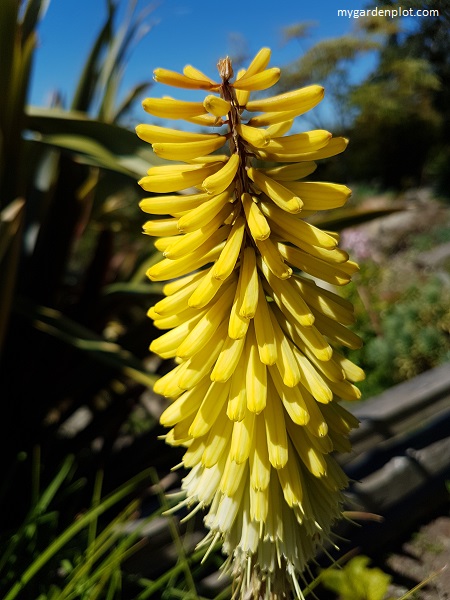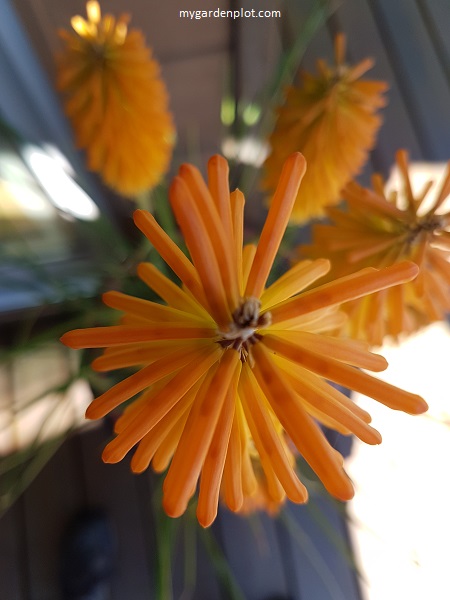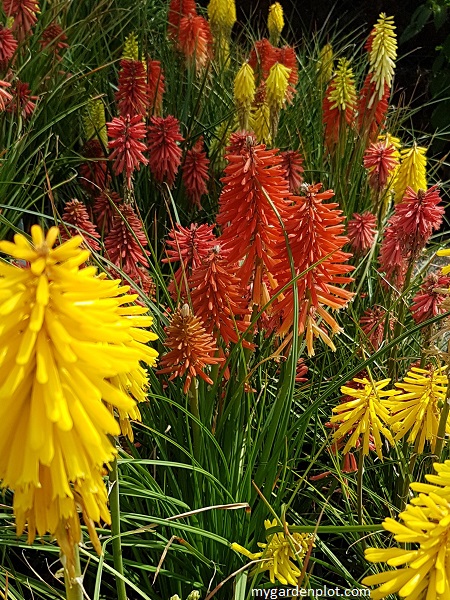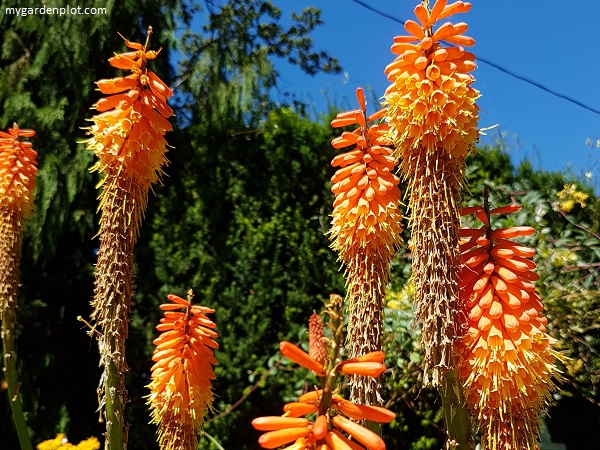Planting Guide And Care For Your Kniphofia: Red-Hot Poker, Torch Lily
When in bloom, it is hard to miss the Kniphofia’s dynamic flower spikes. It is more commonly known as the Red-hot Poker plant or Torch Lily. The vibrant and gradual colour change from buds to mature flowers give the impression of a flaming torch or red-hot poker, hence the name. The tall flowers’ exotic texture comes in bright shades of red, orange, yellow or cream, with a foliage base that resembles grass. It is native to eastern and southern Africa. And one would think that this perennial would be out of place in the Pacific Northwest. But no, you can find a Red-hot Poker (Torch Lily) planted in many gardens here in southern British Columbia. Following are the best tips for when to plant, how to prune and essential plant care tips for growing Kniphofia.
The Red-hot Poker (Torch Lily) is best planted in a mixed border where it adds architectural interest with its tall stalks of glowing flowers. As well the smaller varieties can be used in planters for container gardening that features other plants too. It features beautifully with salvias, nestled among a lavender border or other sun-loving summer garden and fall garden plants. Red-hot poker plant is deer and rabbit resistant and a strong draw for hummingbirds and butterflies. And as a drought-tolerant plant, it is well suited for a dry garden bed.
Red-Hot Poker (Torch Lily) At A Glance
Type: Perennial
Location: Full sun
Blooming Season: Early Summer to Late Autumn
Height: Varies by type from 60 – 180 cm (24 – 72 inches)
When To Prune: Remove Fade Flowers During Summer And Autumn (see details below)
Zones: 6, 7, 8, 9 cold hardiness to -23C to -18C (0F to -10F)

Where to Plant And How To Grow Red-Hot Poker (Torch Lily)
Kniphofias are best planted in the springtime but can be done early autumn too. They thrive in a sunny location in well-drained, moist soil. Water moderately. The roots of the Kniphofia are rhizomatous, but it is generally not considered invasive. Mature large clumps may be divided in late spring. They are drought-tolerant once established.
Red-hot poker is a good option too for container gardening. Plant in a terracotta pot and place it in a sunny location on the deck.
How To Prune Faded Red-Hot Poker Flowers
To stimulate new blooms, faded flowers should be cut out. Prune the stem with the died flowers at the base of the plant. Trimming the faded flowers of your red-hot poker plant also helps to keep it tidy all season long.
This pruning maintenance encourages late flowers with most kniphofia plants. Our red-hot poker plant keeps on blooming well into late autumn. We are in zone 8, and in October, our Kniphofia ‘Lemon Popsicle’ Hot Poker can feature new fall blooms alongside the Nerine bowdenii for a cheerful burst of autumn colour in the garden.
RELATED TOPIC: Summer Gardens And Favourite Flowers
Winter Care Tips For Your Red-Hot Poker (Torch Lily)
Kniphofias can be sensitive to cold weather if it is located in an exposed area. Add some mulch in late autumn or early winter. To help it through the winter, don’t trim the leaves but rather gather and tie them above the crown. This will protect it from crown rot, and stop it from getting the central crown too wet and freezing. When spring rolls in, remove the tie and tidy and trim where needed.


Spend more time in the garden! Large choice of gardening supplies for your garden bed and maintaining lawns, and fun art and sculptures for your garden and vegetable patch. Check out the latest deals for garden supplies. View the awesome deck decorations and patio furniture, and the necessary garden tools, and more.






